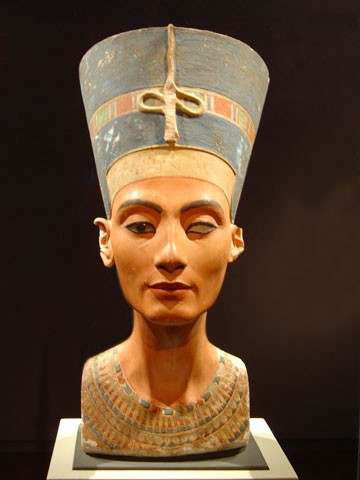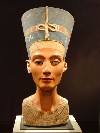Letter from Berlin, First Impressions
Ordnung und Ruhe
By: Patricia Hills - Jun 24, 2013
I arrived in early April on a raw cold day, with patches of dirty snow on the ground to begin teaching at the John F. Kennedy Institute for North American Studies at the Freie Universität as the Terra Foundation Visiting Professor. (The Terra Foundation, based in Chicago, wants to spread the word about the history of American art throughout the world.) My assignment has been teaching two seminars to international undergraduate and graduate students: one on the Visual Culture of Slavery and the Civil War, and the second, on African American Art. These are both topics of which these students know little, so it’s been fun to introduce them to events, issues, ideologies outside of their academic comfort zone. The Kennedy Institute, by the way, is celebrating its 50th Anniversary in late June, with a keynote speech by Yale Professor Alan Trachtenberg.
Meanwhile, Berlin – the neighborhoods, its people, its art, its culture, its educational system, its language, its preoccupations, its tics – has given me new experiences and outlooks. Every day brings surprises and challenges that I can share with Kevin Whitfield, my companionable spouse, happily retired, and an enthusiastic partner in my explorations.
What Berlin has to offer in the way of culture is immense. They have three opera houses (Deutsche Oper, Staats Oper, Komische Oper), plus the Berliner Ensemble, which is now running three Robert Wilson productions. They also have the Philharmonie and Kammermusiksaal in the Kulturforum (former West Berlin), and many museums—many, many museums—showing the range of art from the antique and ethnographic to the very contemporary. Some are clustered in the Kulturforum, such as the fabulous Gemäldegalerie (containing German, Dutch, and Italian Renaissance and Baroque painting, that makes the Metropolitan Museum look like a Highway 66 Museum), next to the Philharmonie Berlin Philharmonic concert hall, then Mies van der Rohe’s Neues Galerie (with 20th-century painting and sculpture) and the Kunstgewerbemuseum, an arts and crafts museum now closed for renovations.
In the former East Berlin is Museum Island, which holds not only the Berliner Dom, but also the Pergamonmuseum with its overwhelmingly impressive Pergamon altar (expressionistic Hellenistic sculpture in one great room plus 20-foot high Persian tiles in other rooms), the Altes Museum (a Karl Friedrich Schinkel 1830 building with Greek Art), the Neues Museum (so called because it opened in 1855, and now has on view THE Nefertete), and the Alte Nationalgalerie (Old National Gallery) which holds primarily 19th-Century German paintings, with highlights by Arnold Böcklin, Casper David Friedrich, and Max Lieberman. Other notable museums throughout the city include the Jewish Museum, the Schloss Charlottenburg, the Hamburger Bahnhof, the Berlinische Galerie, the Martin Gropius Museum, etc. etc.—all of which I want to talk about.
When East and West Berlin were cleaved in half by the WALL (die Mauer), both the DDR (the Deutsche Demokratische Republic, the USSR controlled region of Germany) and the Federal Republic of Germany (Bundesrepublic Deutschland, allied with the US during the Cold War) each built up its Berlin museum holdings. The result is an excess of riches, if there is such a thing. And so far, besides the Pergamonmuseum, there is no crowding at the museums.
Winding through Berlin is the Spree River and many canals that efficiently made possible the development of commerce. Today tourists and Berliners can enjoy the scenery and the canned history from loudspeakers on the flat river boats that glide down the river under low bridges. Afterwards, one can enjoy the banks of the Spree where accommodating cafés provide beer, wine, Aperol Spritzers (Aperol, Prosecco, mineral water “mit Gas,” an orange slice), and Flammkuchen (pizza toppings on a brioche-like thin pastry). The Germans love being outside to eat . . . and to smoke. When the weather gets into the 50s (Fahrenheit), the cafés provide light acrylic throws to warm the shoulders.
In terms of the fine arts—paintings, sculpture, photographs, installation art—I want to talk in future letters about the older art (Greek through 19th-century), modern art (20th century), contemporary and technologically-savvy art (late 20th-century and 21st century); but I also want to talk about Berlin’s preoccupation with anti-culture under the Nazis (1933-1945), the Occupation, and the WALL (1961-1989) during the Cold War. Museums, street kiosks, and memorials constantly remind us of those pasts.
A lot of Americans live here and like it, so I will send in an interview with Bonnie Woods. She introduced me to some of the funky neighborhoods, like Kreuzberg, cafés tucked into houseboats, street art, and Turkish food. She’s now back home in Boston. I’ve been hanging out with Vivien Fryd, an art historian from Vanderbilt, who likes it so much that when she finished her teaching gig at the Freie Universität in February (she was my predecessor), she stayed on another five months. But it was also to do research for a book on her mother, who as a teenager was helped by the Quakers to escape (barely) the Nazis, and her uncle Henry Ries, who photographed civilians coping with war-ravaged Berlin and the Berlin Airlift planes.
Meanwhile, there is the adventure of daily living (mastering the U-Bahn, the cash machines); the German love for law and order (the transit system is based on a quasi-honor system; the language is based on a strict order of nouns, verbs, and adjectives); their friendliness (willingness to help translate your maps); love of pets (dogs on leashes are all over the subways); athleticism (bikes everywhere); efficiency (the trains always did run on time); and green consciousness (bottle deposits cost about as much as the water in the bottles; no air-conditioning). The culture is different and quite wonderful.
The language looks like it might be easy, since there are so many similar words: Hund = hound, ie dog; Haus = house. But there are all those pesky declinations: der, die, das, den, dem, des. And which to choose? Well, rules govern. there is the “accusative” and the “dative,” not to mention, the “genitive.” This is not simple, and the rules may seem arbitrary—but I know German logic would argue otherwise. Some of the prepositions go some ways and others go another, so memorization is a requirement. And then there are the contractions: im, ins, zur, etc. Genau! (Exactly)
Read Mark Twain’s hilarious essay on the German language. He has it spot on. However, the Germans (unlike the French) are cheerful about one’s butchering their language, and they jump in to practice their English. But at this point my broken German trumps their broken English. Genau! More to come.


